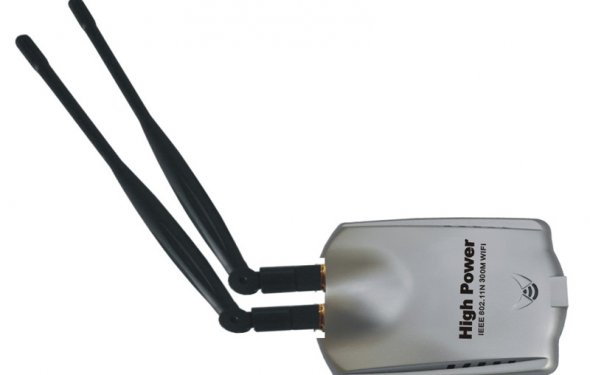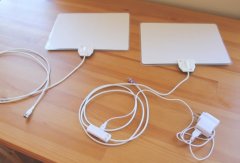Powered antenna for digital TV

 The notion of amplifying a TV signal generally seems to make sense: if your TV channels tend to be far-away, the amplifier increases the gain and then make the weak indicators stronger so that your television can get them and provide you with much more reliable movie. A no-brainer, right?
The notion of amplifying a TV signal generally seems to make sense: if your TV channels tend to be far-away, the amplifier increases the gain and then make the weak indicators stronger so that your television can get them and provide you with much more reliable movie. A no-brainer, right?
But, do interior increased (driven) antennas truly offer better results in all circumstances? I’ve done considerable evaluation about this, and interestingly, I’ve discovered the solution quite often to be “no”!
My Experiments
I’ve done direct A/B comparisons between the un-amplified (passive) Mohu Leaf therefore the powered Mohu Leaf Plus (both of that I got without Mohu for review reasons). We tested to observe many stations they could pick up in four various areas around Providence, RI. In a single location they tied at 10 networks each, a tie. In two places, the amplified antenna found two even more channels (32 programs for amplified to 29 for passive, and 30 for increased to 28 for passive). But, in one location, the passive Leaf obtained more channels and blew the driven Leaf Plus out of the liquid (18 stations to 11)!
These are extremely mediocre results for the alot more pricey powered antenna! I discovered similar outcomes with all the amplified NV20 Pro. Basically it absolutely was about the same or only a little even worse in a few instances as compared to unamplified Mohu Leaf!
After I got these outcomes, I happened to be baffled. Was there something wrong with the way I was testing? Exactly how could the greater amount of costly driven antennas be no much better than the passive one?
Specialist Viewpoints
After doing some analysis online, i came across the opinion of some folks when you look at the recognize is powered interior antennas don’t give any benefit more often than not. Indeed, they could have even worse reception than the equivalent passive antenna. Just how is this feasible?
There are many factors. Initial situation where a driven antenna might be worse is when you will find strong indicators alongside poor signals in your town. What happens is that the amp can overload your TV tuner by over-amplifying the powerful indicators. The weak signals in addition get messed up in addition, since they are mixed in using strong signals. The result is even worse reception than no amplifier for those of you weaker programs.
The 2nd reason is that the television sign it self could be altered, perhaps as a result of reflections. The amp will only make this distorted sign more powerful, although not fix the distortion. Therefore, the amplifier adds no advantage in cases like this.
Finally, television signals tend to be quite high-speed indicators that want very good amplifiers. In the event your amplifier is cheap (non-linear in technical terms), it may make the sign even worse.
Recently, we heard from a real transmitter engineer whom works well with a TV section whom corroborated this! It’s not only Internet ranting.
When an Amplifier is helpful
Today, you will find instances when a good television signal amplifier can be advantageous. Notice I’ve already been speaing frankly about interior antennas in this specific article. Amplifiers are advantageous for outdoor and attic antennas because those cable lengths are usually lengthy and frequently the sign is split to more than one television. In those cases, an amplifier isn't only recommended, but often a necessity to get optimal reception. But, make sure to put the amp close to the antenna, maybe not the TVs!
In addition, if your channels are distant, could avoid the first problem I discussed (distorting the signal because some indicators are way too strong). So, a powered interior antenna are advantageous if you're way-out into the boonies, a long way away from all TV programs. If you live in a city, this really is probably not the scenario however.
The Conclusion
Therefore, both my experimental results and expert views say that indoor driven antennas don’t provide much additional advantage typically, and will actually be even worse than a passive antenna. I became extremely amazed by this outcome, but here it really is. Save your valuable cash and purchase a passive level antenna like unamplified Mohu Leaf for around $40 (see below). That’s the one I use, while my a great deal more expensive powered antennas sit unused!
|
HDTV Antenna, 1byone Super Thin Digital Indoor HDTV Antenna - 25 Miles Range with 10ft High Performance Coax Cable, Extremely Soft Design and Lightweight Speakers (1BYOS)
|
|
CrazyFire Indoor Amplified HDTV Antenna,50 Miles Digital TV Antena Long Range,USB Powered Digital TV Flat Antenna with Detachable Amplifier Booster and 10ft Coax Cable Speakers (H-Zone Technology Co.,Ltd)
|
|
TecBillion 30-50 Mile Range Flat HDTV Antenna with Detachable Amplifier- Flat and Super Thin, Digital 1080P TV Antenna with 15ft Copper Braided Coax Cable, Home and Car Applicable Speakers (TecBillion)
|
|
|
ANTOP AT-133B Paper Thin Smartpass Amplified TV Antenna with High Gain and Built-in 4G LTE Filter 35/50 Mile Long Range 360 Degree Reception 10' Cable, 4K UHD Ready, Piano White CE (Antop Antenna Inc)
|
|
|
FreeAir.tv HD TV Antenna (OTA/ Dual Band/ VHF/ UHF/ Multi-directional/ USB Power Supply/ Detachable Cable/ Premium Quality), Super Thin, Clear, Amplified with Range of 50+ Miles Range and TV Guide Boost (FreeAir.tv)
|